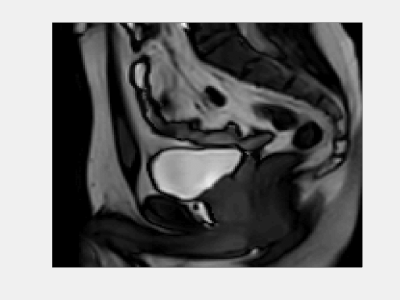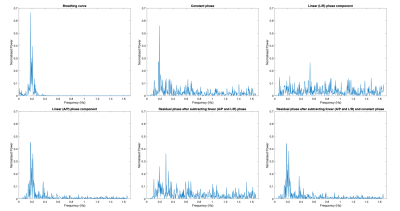Sean McTavish1, Anh T. Van2, Kilian Weiss3, Johannes M. Peeters4, Marcus R. Makowski2, Rickmer F. Braren2, and Dimitrios C. Karampinos2
1Technical University of Munich, Munich, Germany, 2Department of Diagnostic and Interventional Radiology, Technical University of Munich, Munich, Germany, 3Philips Healthcare, Hamburg, Germany, 4Philips Healthcare, Best, Netherlands
1Technical University of Munich, Munich, Germany, 2Department of Diagnostic and Interventional Radiology, Technical University of Munich, Munich, Germany, 3Philips Healthcare, Hamburg, Germany, 4Philips Healthcare, Best, Netherlands
Both the constant and linear phase terms vary periodically with breathing motion confirming the hypothesis that respiratory is the main source of motion-induced phases. The main contribution to the phase error in the prostate is the constant phase term across diffusion encoding directions.

Figure 1: Shown here is the cine acquisition in the sagittal plane. It can be seen that as the subject breathes, the prostate also moves by a small amount with the breathing motion, especially along the feet/head direction.

Figure 3: Shown here are the power spectra for the axial scan with diffusion in the S/I direction. The linear phase is being measured in the A/P and R/L directions. The constant phase, linear phase in the A/P direction and the residual phase after subtracting the linear and constant phases show frequency peaks at similar frequencies to the breathing curve. Note that the values around 0 of each power spectrum were removed prior to calculating the normalized power, which was found by taking the square root of the sum of squares of the power spectrum.